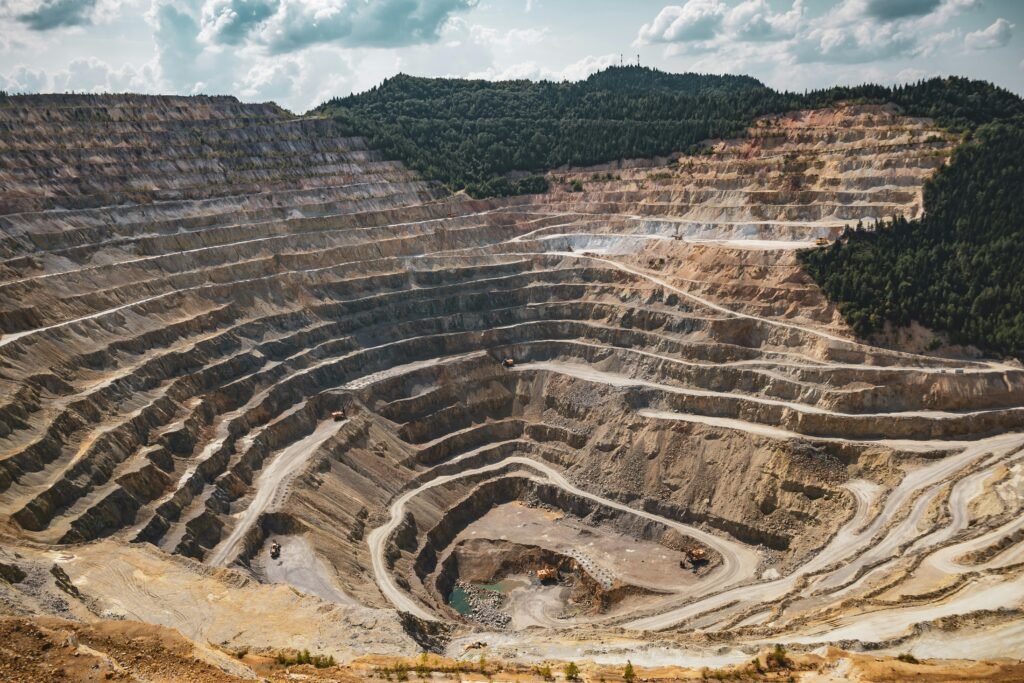
Mining operations are vital for economic development, but they often leave a profound impact on the natural environment. One of the most noticeable consequences is the degradation of land due to the removal of vegetation and disruption of soil structure. As mining activities cease, environmental restoration becomes a responsibility—not just for compliance with regulations, but also to ensure long-term ecological sustainability.
One of the most effective strategies in post-mining land reclamation is revegetation—the process of re-establishing plant life in areas where natural vegetation has been removed or damaged. When done correctly, revegetation helps stabilize the soil, restore biodiversity, improve water quality, and eventually return the land to a productive and balanced ecosystem.
This article outlines the main categories of plant species used in mine site revegetation, their roles, examples of species commonly used in tropical regions (particularly Southeast Asia), and best practices for plant selection and implementation.
1.What Is Revegetation and Why Is It Important?
Revegetation refers to the deliberate planting of vegetation—ranging from grasses and ground covers to shrubs and trees—on land that has been disturbed, particularly after mining operations. The primary goal is to restore the ecological functions of the area, including:
- Preventing soil erosion
- Enhancing water infiltration and quality
- Restoring habitats for flora and fauna
- Sequestering carbon and regulating microclimates
- Rehabilitating land for agricultural or forestry purposes
In addition to ecological benefits, revegetation also fulfills legal and social responsibilities, contributing to a company’s environmental, social, and governance (ESG) performance.
2.Key Categories of Plants Used in Revegetation
a. Ground Cover Plants
Ground covers are typically the first group of plants introduced to a degraded site. These low-growing species spread quickly and form a protective cover over the soil, reducing the impact of rain and wind, and initiating soil recovery. Common species:
- Centrocema pubescens: A fast-growing legume known for improving soil nitrogen levels.
- Mucuna bracteata: Effective in erosion control and used widely in tropical restoration.
- Arachis pintoi: A creeping legume with dense foliage, used for both erosion control and aesthetics.
Ecological functions: - Control surface runoff and erosion
- Improve soil fertility through nitrogen fixation
- Provide microhabitats for insects and soil organisms
- Support the development of beneficial mycorrhizal fungi
b. Shrubs and Small Bushes
Once ground cover is established, shrubs and small bushes help build the intermediate structure of a regenerating ecosystem. These plants are often hardy, fast-growing, and capable of thriving in poor soils with limited nutrients. Common species:
- Calliandra calothyrsus: A nitrogen-fixing shrub used in agroforestry and revegetation.
- Gliricidia sepium: Offers shade and organic matter through leaf litter.
- Cassia spectabilis: An ornamental species that also contributes to pollinator diversity.
Ecological functions: - Act as windbreaks, protecting seedlings and soil
- Provide early shade and microclimate for developing tree saplings
- Contribute biomass and organic matter
- Offer early food sources for wildlife, including pollinators and seed dispersers
c. Trees: Pioneer and Native Species
Trees play a central role in ecosystem recovery. Revegetation efforts typically begin with pioneer tree species—hardy species that grow rapidly and can withstand nutrient-poor soils. Once conditions improve, native or climax species are introduced to help restore the original forest composition and biodiversity. Common pioneer species:
- Albizia saman: Provides ample shade and improves soil conditions.
- Acacia mangium: Highly adaptable and widely used in commercial reforestation.
- Sesbania grandiflora: Known for rapid growth and soil enrichment.
Common native species: - Shorea spp. (e.g., Meranti): Valuable timber species that support biodiversity.
- Dipterocarpus spp.: Native to Southeast Asia, these species represent climax forest types.
- Ficus spp.: Ecologically important for their role in feeding birds and mammals.
Ecological functions: - Rebuild forest canopy and regulate temperature
- Serve as carbon sinks
- Provide long-term habitat and food sources for diverse wildlife
- Encourage the return of native pollinators, birds, and mammals
3.Best Practices in Plant Selection and Revegetation Planning
Successful revegetation requires more than simply planting any available species. The process should be science-based, site-specific, and adaptive. Here are some recommended practices:
- Site Assessment: Evaluate soil properties, topography, hydrology, and the extent of degradation. Identify areas that need stabilization versus areas that can support woody vegetation.
- Use of Native Species: Prioritize native species wherever possible. They are more adapted to local climates and support local biodiversity.
- Soil Improvement Techniques: Apply organic amendments such as compost, biochar, or mycor
